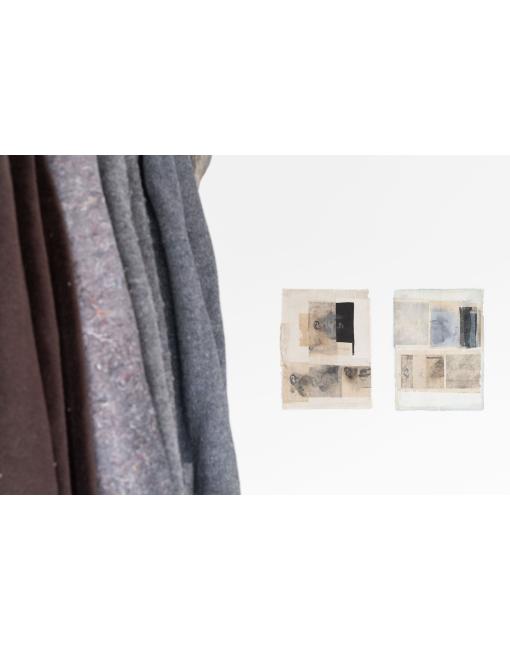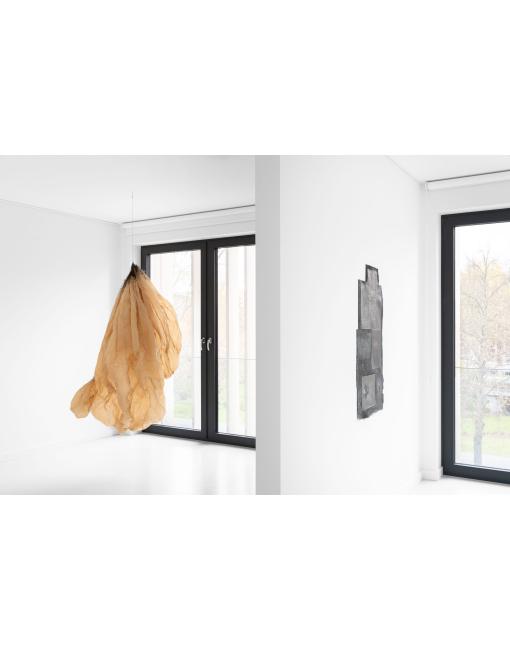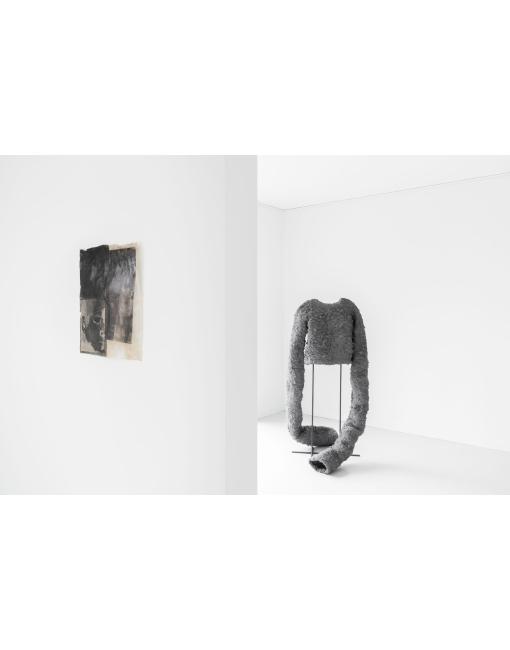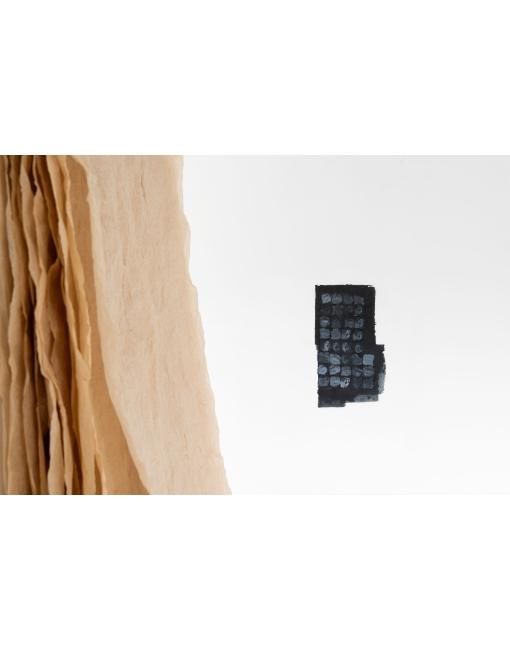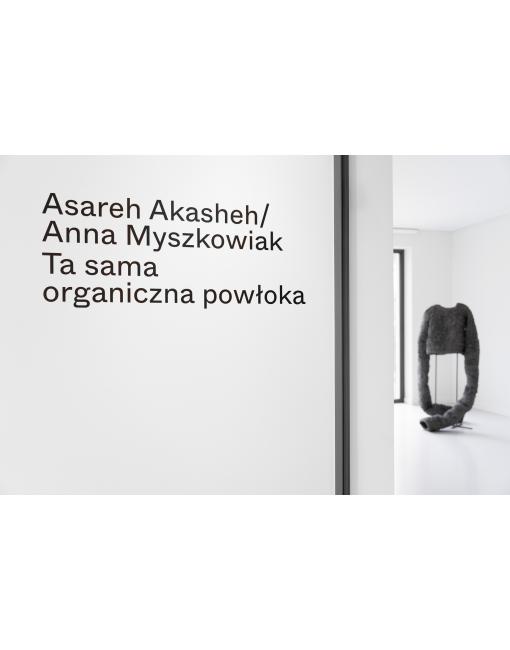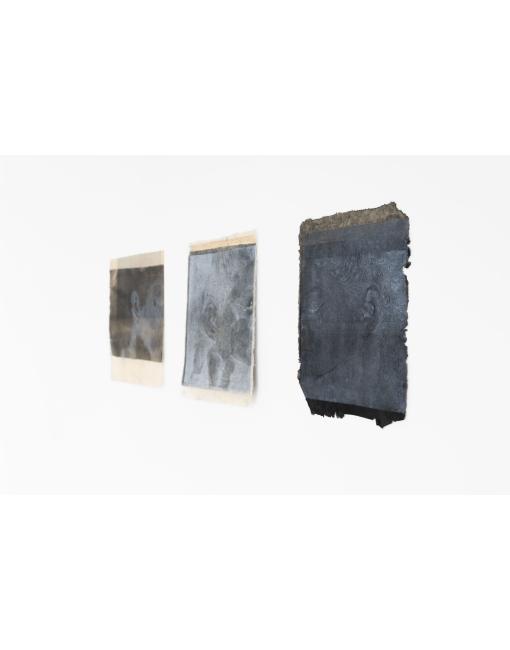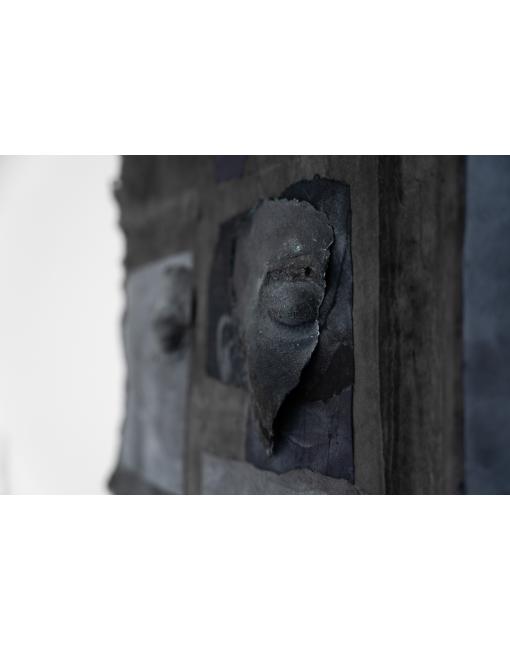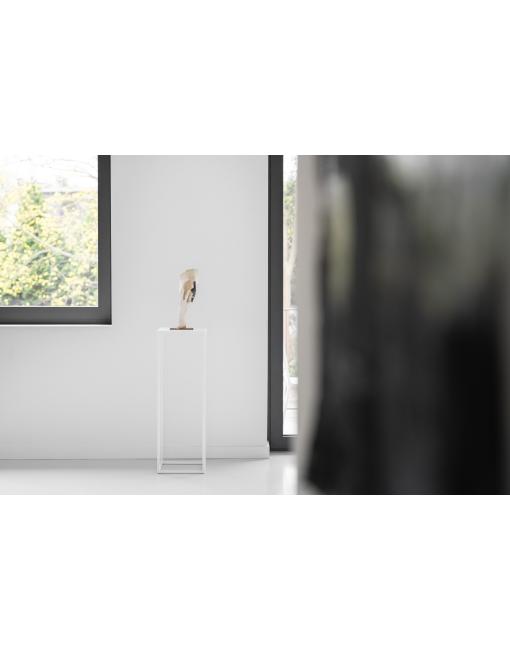Asareh Akasheh/Anna Myszkowiak The same organic layer.
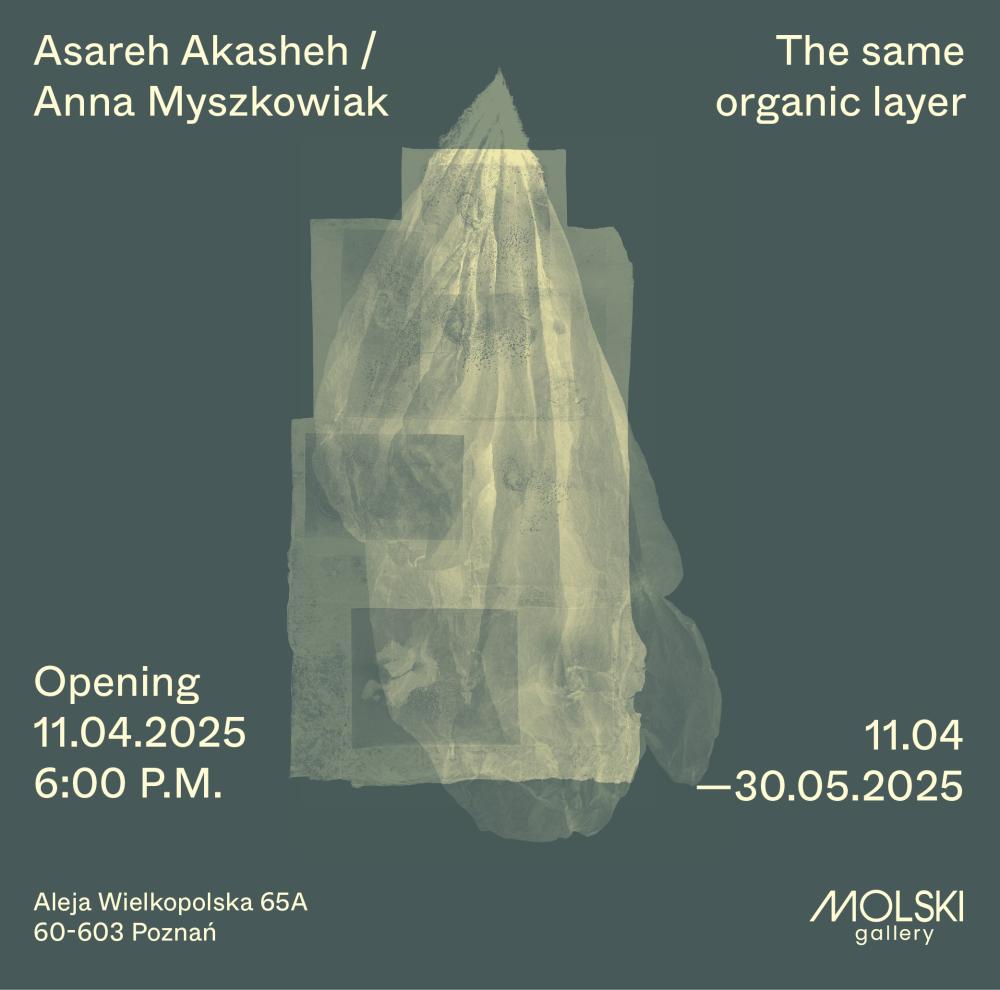
Asareh Akasheh/Anna Myszkowiak
The same organic layer.
There are many - often contradictory - meanings under the term ‘shell’. We may associate it with something pleasant, delicate, giving a sense of comfort and security. On the other hand, shell brings to mind more oppressive words - such as border, barrier, blockade. What do they have in common? The answer may be prosaic, it's all kinds of disruption to the sense of freedom.
In the context of the exhibition entitled ‘The Same Organic Layer’, which confronts the work of two artists - Iranian-born Asareh Akasheh and Pole Anna Myszkowiak - the key question becomes: what kind of layer are we talking about?
One of the most fragile and ephemeral elements that make up the human body is the skin. It can be - within the same organism - both smooth and rough at the same time. What is most fascinating is its ability to persist through the various stages of life: birth, maturity and dying. The composition of a single image - the landscape of the human body - is the story of the development of the same element, whose life cycle is short and yet staggered.
In the successive stages of ‘maturation’, the skin interacts differently with the outside world. Depending on the stage, its resistance to stimuli may be greater or lesser. The strength of this relationship is determined by the level of sensitivity to touch - a stimulus that can be both given and received. Each of these activities crosses the boundary of the body. The skin is a protective covering but also a medium for penetration - physical, emotional, psychological. Touch as a medium of sensory experience builds social interaction. It is the language in which the body records its history.
The materialisation in art of such an ephemeral and intimate activity as touching has been known since antiquity. However, at that time - and in subsequent eras - the focus was mainly on sensuality of an erotic nature. Take, for example, the Laocoon Group (40-30 BC) , Bernini's The Kidnapping of Proserpine (1621-1622) or Yves Klein's One-Tone Symphony (1960) - in all these cases, touch becomes a source of sensual experience. From the realistic depiction of the corporeal embrace and its emotional response to the intrusion of the living body and its encounter with the inorganic shell, fixing the shape for eternity. Most importantly, however, it is a record of emotion that is not a vivisection of the artist, but a universal experience of corporeality.
Asareh Akasheh and Anna Myszkowiak consciously choose to expose themselves in public. Their works, which bear a striking resemblance to human skin, are like pages torn out of a diary - full of the innermost memories. The skin becomes a symbol of identity, a carrier of experiences, a repository of emotions and a space of intimacy. It is a physical boundary, but also its psychological counterpart - a zone in which the self can develop and function. Both artists create works with a structure and texture mimetically similar to the human shell. Its suppleness, fragility and transparency become a metaphor for inner emotions - an attempt to give their art a corporeal dimension, to make it more accessible, more... touchable.
Akasheh imprints parts of her own body or her partner's body on handmade paper, using ink. Most often these are faces, ears and hands. Sometimes, in order to give the works spatiality, she adheres casts of individual body parts made using the papier mâché technique to the paper background. These three-dimensional elements become a spatialised reflection of their base. Viewing them, one gets the impression that they are part of a whole that will never return to unity. It is as if - by means of a symbolic ostracism - the individual elements have disavowed their belonging. All that is left is waste: the degenerated scraps of our psyche, which - although we try to suppress them - shape who we really are. These materialised scars appear on the paper like fragments of our ancestors' bones - bearing witness to the transcendence of being and deeply rooted traumas. They are felt even more strongly in works in which the paper takes the form of a matrix - a coating, a mantle wrapping the artist's skin. It is a form of emotional transfusion of the deepest emotional states onto the medium. Papermaking, body printing or casting are techniques that act simultaneously on the senses of sight and touch. This simultaneity allows for an interpenetration of the senses and a multi-layered reception. The diversity of paper - its thickness, colour, texture, scale - becomes a metaphor for the complexity of human identity. Akasheh's works are reminiscent of ancient cave paintings - created using the body to record reality.
Anna Myszkowiak, on the other hand, interferes with this reality ruthlessly. Her outlandish, heavy, at times even rejecting objects resemble hybrids of the everyday - unobtrusively invading our lives. Although modest in form and means of expression, they are very present. One of the materials the artist reaches for is baking paper - crumpled, stitched together, shaped to resemble dried skin removed from the body. It bears the traces of something that was once alive - perhaps now dead, or perhaps just dormant, waiting for the moment of awakening. Other examples are the blankets - seemingly haphazardly thrown over, resembling a heap of rags. They conceal an intricately carved fold of human flesh, which hangs inertly. He is powerless, but not indifferent. It wants to continue to participate in the cycle of life. Myszkowiak portrays the shell as a symbol of internal discrepancies. We hide, waiting for the right moment to reveal ourselves - if such a moment ever comes. The artist takes us into a fairy-tale world, close to the perception of a child - who accepts images without context, without the need to set them in time and space. In her works, the skin becomes a shell, a curtain, where a sense of self and non-self is born.
Skin - the thin line between the inner and outer worlds. A shell that remembers every touch, every wound, every mark. The exhibition ‘The same organic shell’ is an intimate whispering of two female artists who, through different visual languages, tell a common story about being human. It is a story of fragility and strength, of softness that is sometimes hard, of the body as a diary and the skin as a map of emotions. In their work, the shell is not a barrier - it is a bridge. It connects the visible with the hidden. It is in these spaces of silence, touch and tenderness that fates intertwine, crossing the boundaries of geography, language and trauma. Because although different - we wear the same skin. And we hear ourselves through it.
Krzysztofa Kornacka
Exhibition: 12.04.2025 - 30.05.2025
Opening: 11.04.2025 at 6 pm
MOLSKI gallery
Aleja Wielkopolska 65A
60-603 Poznań


